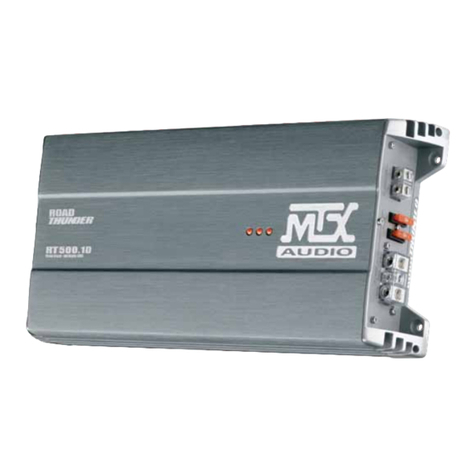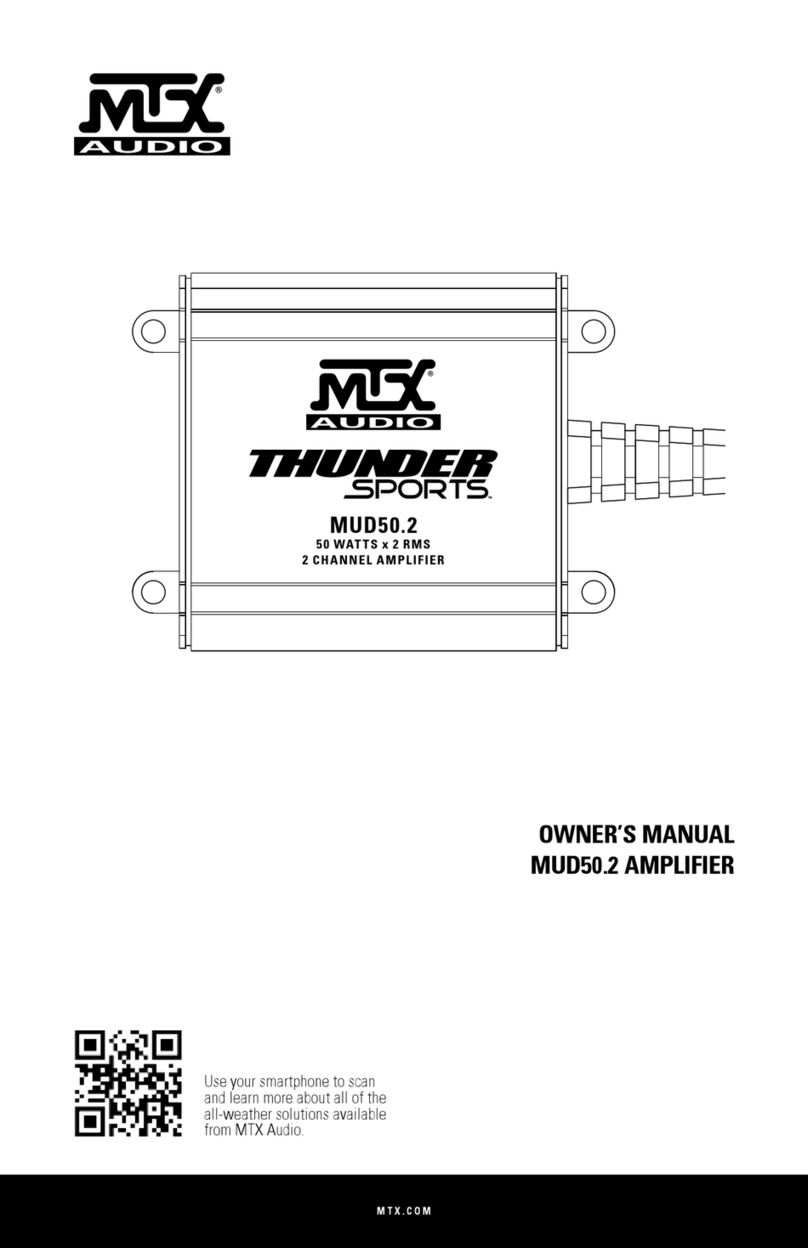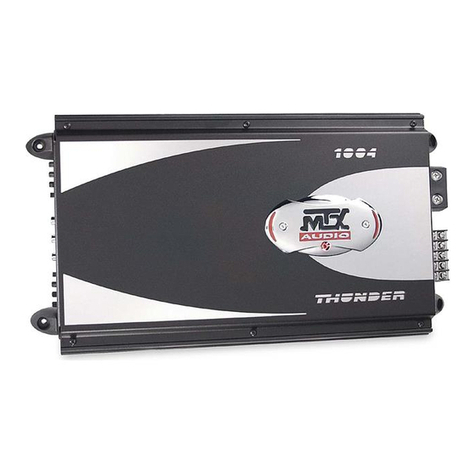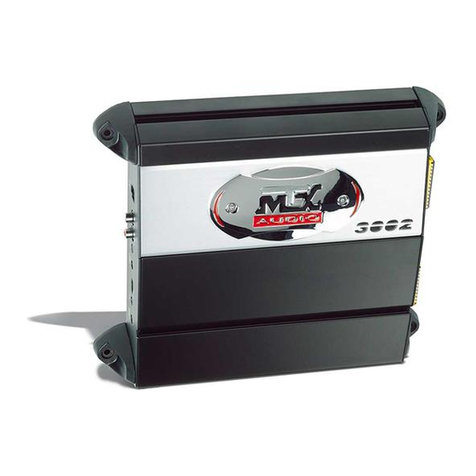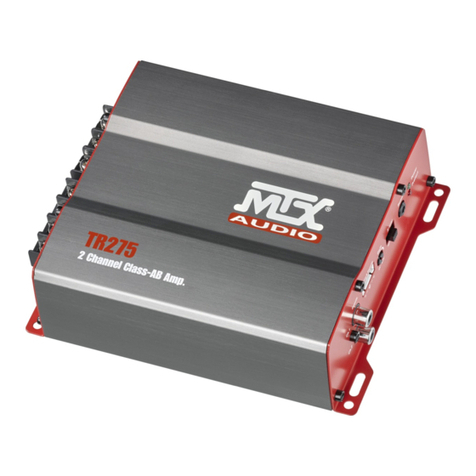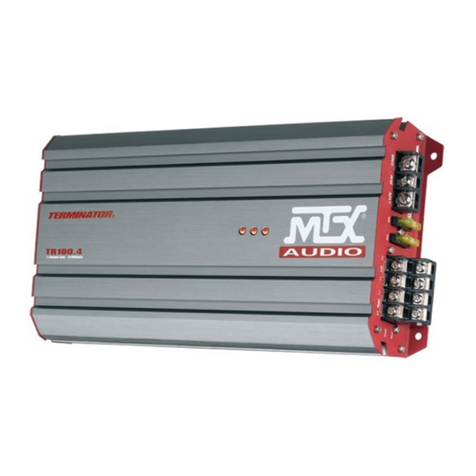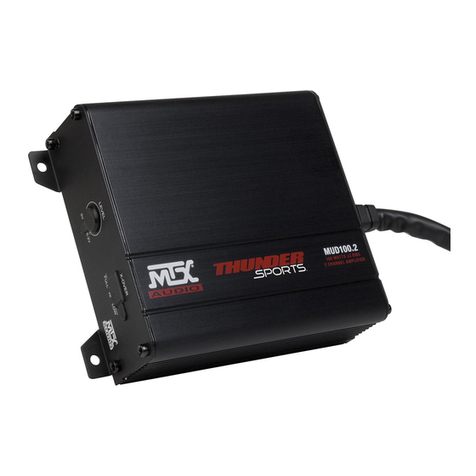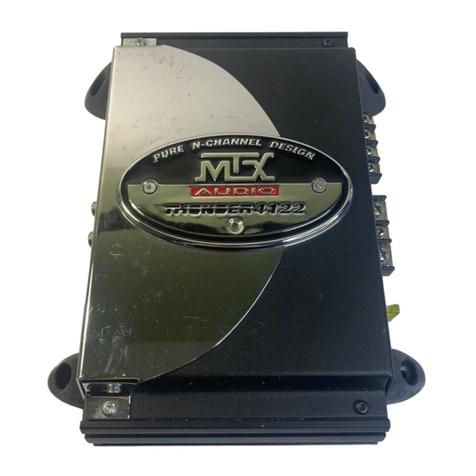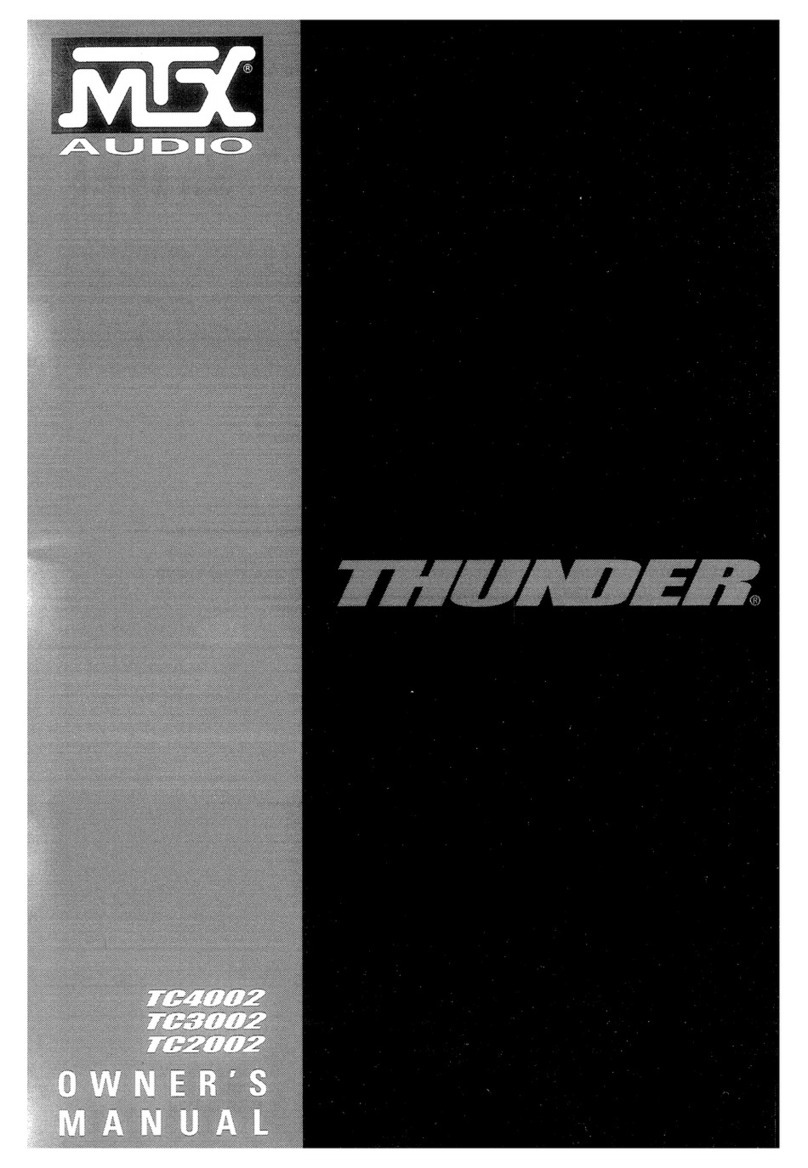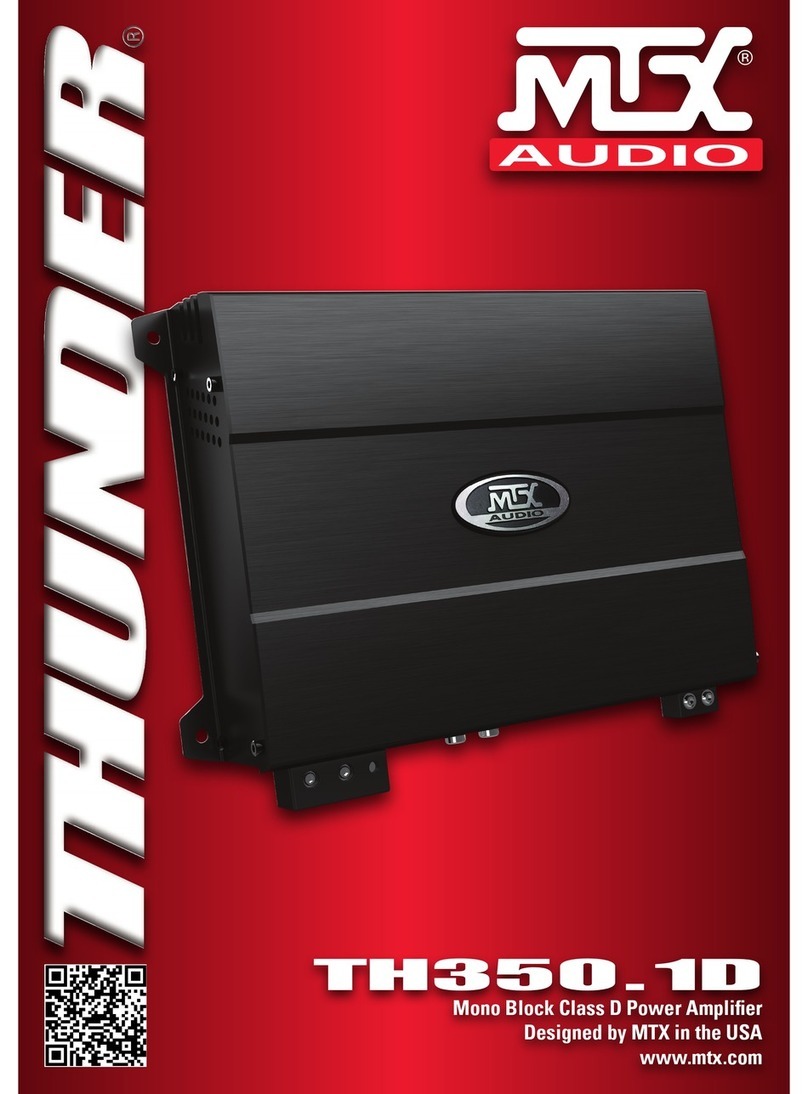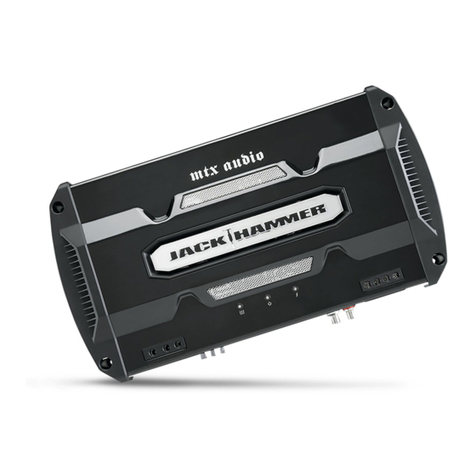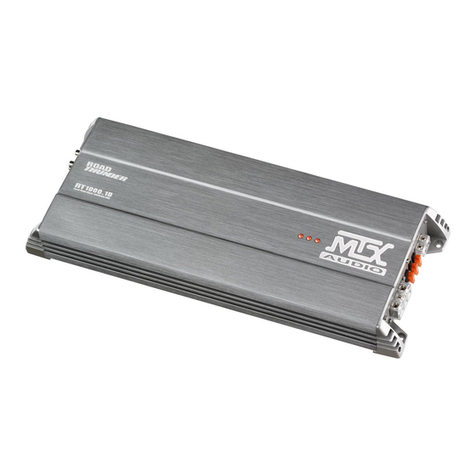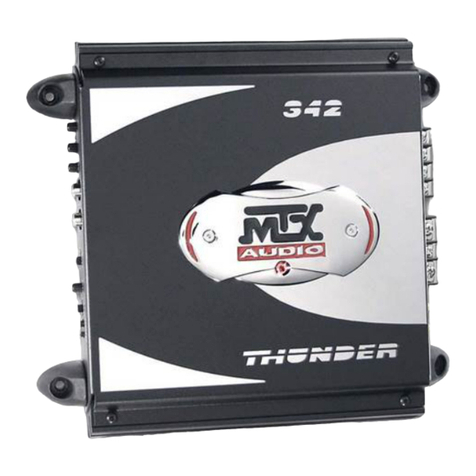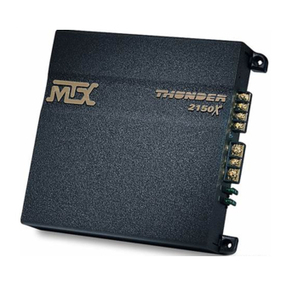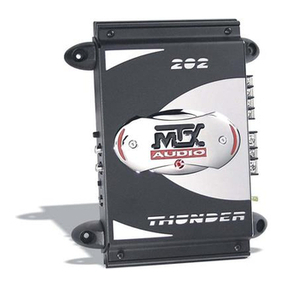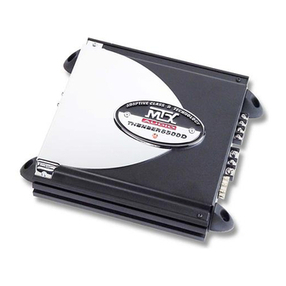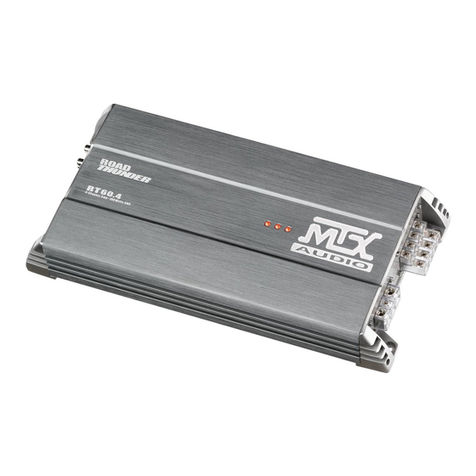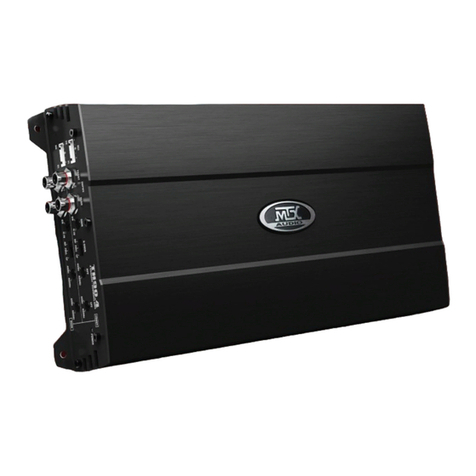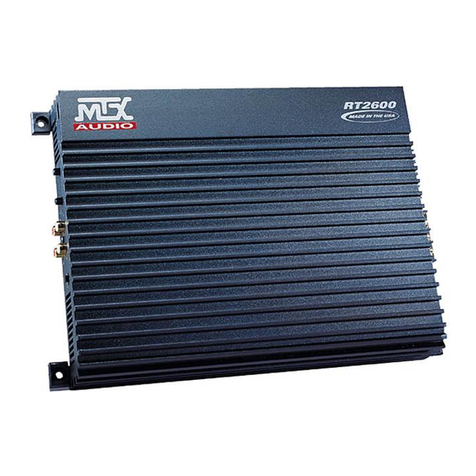Manuel - MTX RFL4120
Connexions :
Connecteur de masse – C’est le bornier qui doit être relié à la masse de votre véhicule. Une masse de très bonne qualité est indispens-
able. Il faut un contact de haute qualité avec vis et écrous sur la tôle à nu (enlever la peinture avec une brosse métalique). Plus la masse
est courte, meilleur sera le résultat. Il faut utiliser la même section de câble que pour l’alimentation (50mm2).
Connecteur ”Remote” – C’est la commande d’allumage et d’extinction de l’amplificateur. Pour allumer l’ampli, il faut appliquer un
+12V sur cette borne. La commande ”Remote”se trouve dans les câbles de votre source avec l’inscription ”Remote”ou ”Power An-
tenna”.
Connecteur d’alimentation (+12) - C’est l’alimentation de l’amplificateur. Ce bornier doit être connecté directement à la borne +12V
de la batterie. Pour éviter les parasites, il faut prendre soin de ne pas faire passer le câble d’alimentation à moins de 15cm du système
électrique de la voiture ou des câbles RCA. En raison de la très forte puissance de l’ampli, MTX recommande d’utiliser un câble de
50mm2.
Fusibles - Lorsque’un fusible fond, il faut le remplacer par un fusible de même valeur.
Attention : ne jamais utiliser un fusible plus puissant.
Connecteurs haut-parleurs - Connecter vos haut-parleurs à ces borniers. Il faut respecter les phases pour obtenir la meilleures qualité
sonore. Des inversions de phase peuvent dégrader le grave et la qualité sonore.
Mode ponté (Bridge) : utiliser les bornes (+) et (-) comme indiqué sous le bornier par“Bridge”.
Attention : en mode ponté (Bridge), ne pas utiliser d’impédance plus basse que 4Ω.
Installation et montage :
MTX vous recommande de faire appel à un installateur spécialisé pour le montage de votre amplificateur.Tout mauvais branchement
peut gravement endommager votre amplificateur, vos haut-parleurs ou encore le système électrique de votre véhicule. Veuillez à
vérifier deux fois les branchements avant de mettre en marche votre système audio.
1. Déconnectez la masse de la batterie du véhicule.
2. Déterminez l’emplacement de votre amplificateur MTX. Sa position idéale est à plat, le logo orienté vers le haut. Il faut que l’air
puisse bien circuler autour de l’ampli pour assurer un refroidissement optimal.
Repérez les trous de fixation, retirez l’amplificateur, percez des avant-trous. Attention à bien vérifier de ne pas percer dans le réservoir,
dans une durite ou encore dans le système électrique du véhicule.Vous pouvez visser votre amplificateur.
3. Faites passer un câble d’alimentation de la batterie jusqu’au connecteur marqué ”+BATT” sur amplificateur. Ne pas connecter ce
câble pour le moment. Lors du passage à travers une tôle, il faut utiliser un caoutchouc de protection pour que le câble ne s’endom-
mage pas. Attention à bien utiliser la section de câble recommandée.
4. Il faut installer un fusible et un porte fusible à moins de 20cm de la batterie du véhicule. C’est une protection très importante pour
vous et votre véhicule en cas d’accident ou de court-circuit. Vous pouvez maintenant connecter le câble d’alimentation sur la borne
positive (rouge) de la batterie.
5.Trouvez une très bonne masse, la plus courte possible (donc proche de l’amplificateur). Le point de contact doit être décapé (plus de
peinture) pour assurer un contact optimal et un transfert de courant maximum. Utiliser la même section de câble que pour l’alimenta-
tion. Branchez la masse au connecteur marqué ”GND”sur l’amplificateur puis visser l’autre extrémité à la tôle du véhicule.
25A 25A 25A 25A
+12VGND
Power Fuses
REM
Input
Ch.1 Ch.2
Gain
6V - 0,2V
Ch.1 Ch.2
Speakers
Bridge
(+)
(+)
(-) (+) (-)
(-)
Ch.3 Ch.4
Ch.1 Ch.2 Ch.3 Ch.4
Input
EBC
Remote
Gain
6V - 0,2V
High Pass
Low Pass
40Hz - 5000Hz
40Hz - 5000Hz
On
Off
On
Off
High Pass
Low Pass
40Hz - 5000Hz
40Hz - 5000Hz
On
Off
On
Off
Ch.3 Ch.4
Speakers
Bridge
(+)
(+)
(-) (+) (-)
(-)
25A 25A 25A 25A
+12VGND
Power Fuses
REM
